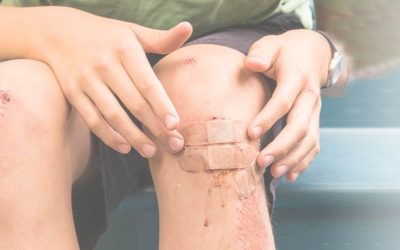Sprained Ankle Symptoms and How To Heal A Sprained Ankle
It looks like Spring has finally decided to stay! The season of playing in the park, running around, soccer, softball, and more is here and that means outdoor fun for the whole family. It also means a whole new list of things that parents need to look out for: sun safety, hydration, insect bites and stings, water safety, scrapes and bruises, and ankle sprains. Although ankle sprains can happen at any point in the year, they are more common in the summertime with all the activities going on. Here’s what you need to know:
What is a sprain?
An ankle sprain is the result of the ligaments that support and stabilize the ankle getting overly stretched or in more severe cases, torn.
A sprained ankle is a very common injury, especially for growing teens as their ligaments are constantly in a state of flux as they try and keep up with growing bones.
When do ankle sprains occur?
An ankle sprain can happen in a variety of situations. They can occur when your child (or you!) is running around in the park, on the sports field, or even just stepping down in an awkward, unlucky way. A sprained ankle is a very common injury, especially for growing teens as their ligaments are constantly in a state of flux as they try and keep up with growing bones.
What do you do?
If you think your child has sprained their ankle, you’ll want to make sure that the sprain is in fact a sprain, and not a fracture. This means a visit to your doctor who will examine the ankle and the severity of the sprain.
How To Heal A Sprained Ankle
For all sprains initial treatment is based on first aid principles. The acronym RICE is helpful when remembering what to do:
R – Rest the ankle by avoiding walking on it
I – Apply ice immediately to help keep swelling down. It’s important to not place the ice directly on the skin. Use a towel as a barrier. Keep the ice on the ankle for about 10-15 minutes. Try and do this every two to four hours for 2-3 days. A plastic bag with ice water in it or a bag of frozen peas are great ice packs in this situation as they can mould to the shape of the ankle.
C – Compression wraps or ace bandages help to support the ankle during this time as well as help with swelling.
E – Elevate the ankle whenever possible to help with decreasing the swelling. You can raise your child’s injured leg and rest it on some pillows while they are watching TV, reading or resting.
So long as there isn’t a complete tear (in which case your doctor may advise a boot cast), you can begin exercises with your child after a few days. Active movement will help with the healing process.
Examples of exercises to begin with are:
- Tracing small circles with the foot, 10 times clockwise and 10 times counter clockwise.
- Have your child “draw” the alphabet with their foot. Bonus points for “writing” their name!
- Ankle pumping: When your child is sitting, have them bring their toes up towards them and then back down 10 times.
- Light stretching: This should only be done once the child no longer has any pain with the above exercises and can walk on the ankle again with little to no pain. Help stretch the calf muscle by gently bringing the foot towards the body while the child is in long sitting.
How do you prevent it?
The best way to prevent ankle sprains is to maintain strength, balance, and flexibility in the joint.
- Encourage your child to warm up before they exercise (ankle alphabet works great here too!)
- Keep an eye out for uneven or cracked surface
- Wear supportive shoes, and if playing a sport, wear the appropriate ones for the terrain
- If your child is tired, give breaks or tell them to slow down. Fatigue makes everyone more susceptible to injury
- If your child has had a sprained ankle in the past, make sure that it’s completely healed before returning to sports
- Using tape or ankle braces (as directed by a doctor of physiotherapist) if your child is prone to ankle sprains.
Quick Tips:
-
Ankle sprains are a common injury in children and teens
-
See your doctor following injury, especially if your child is unable to put weight on the injured ankle
-
Pain and swelling from an ankle sprain should improve quickly following RICE
-
Most children recover fully from an ankle sprain











